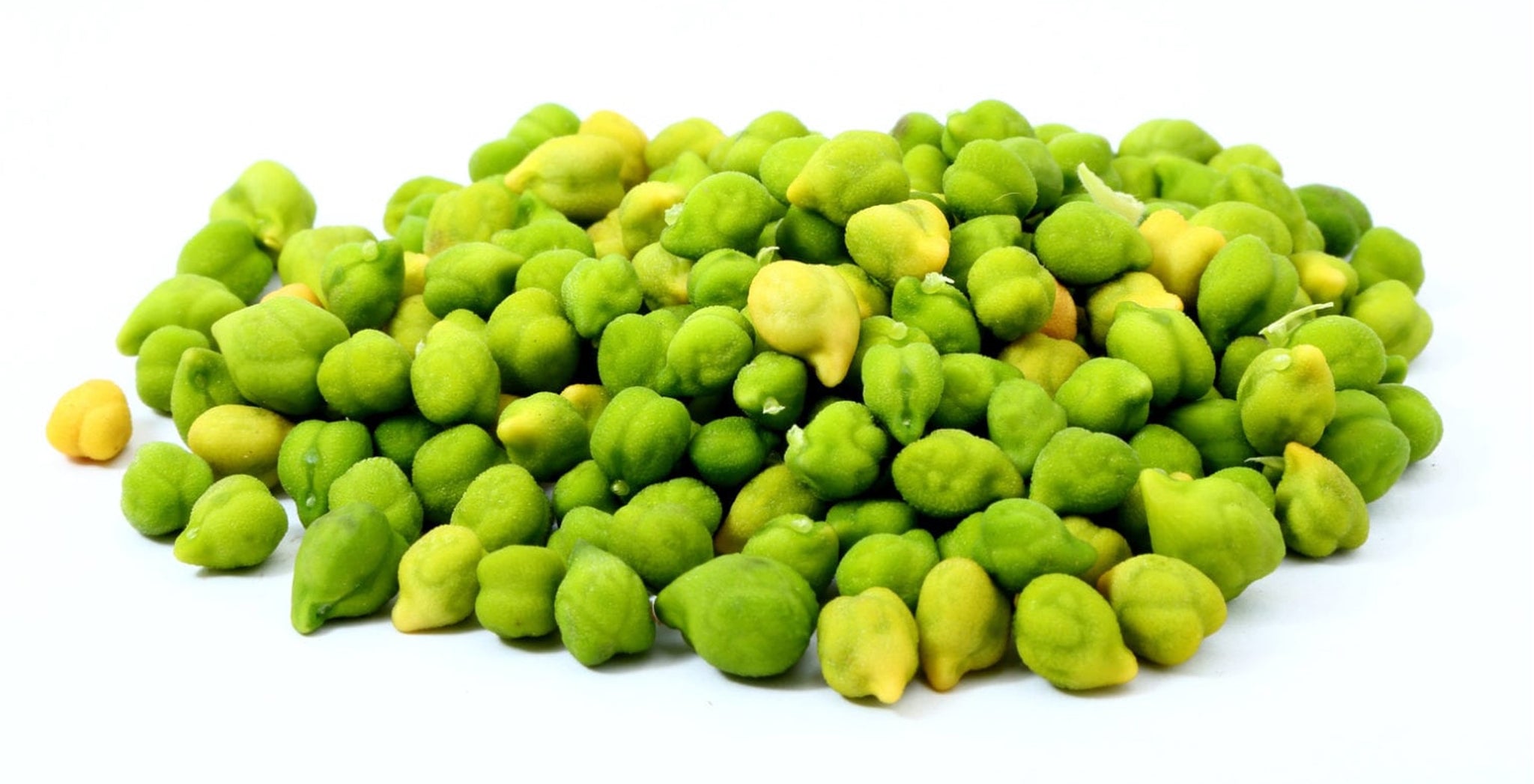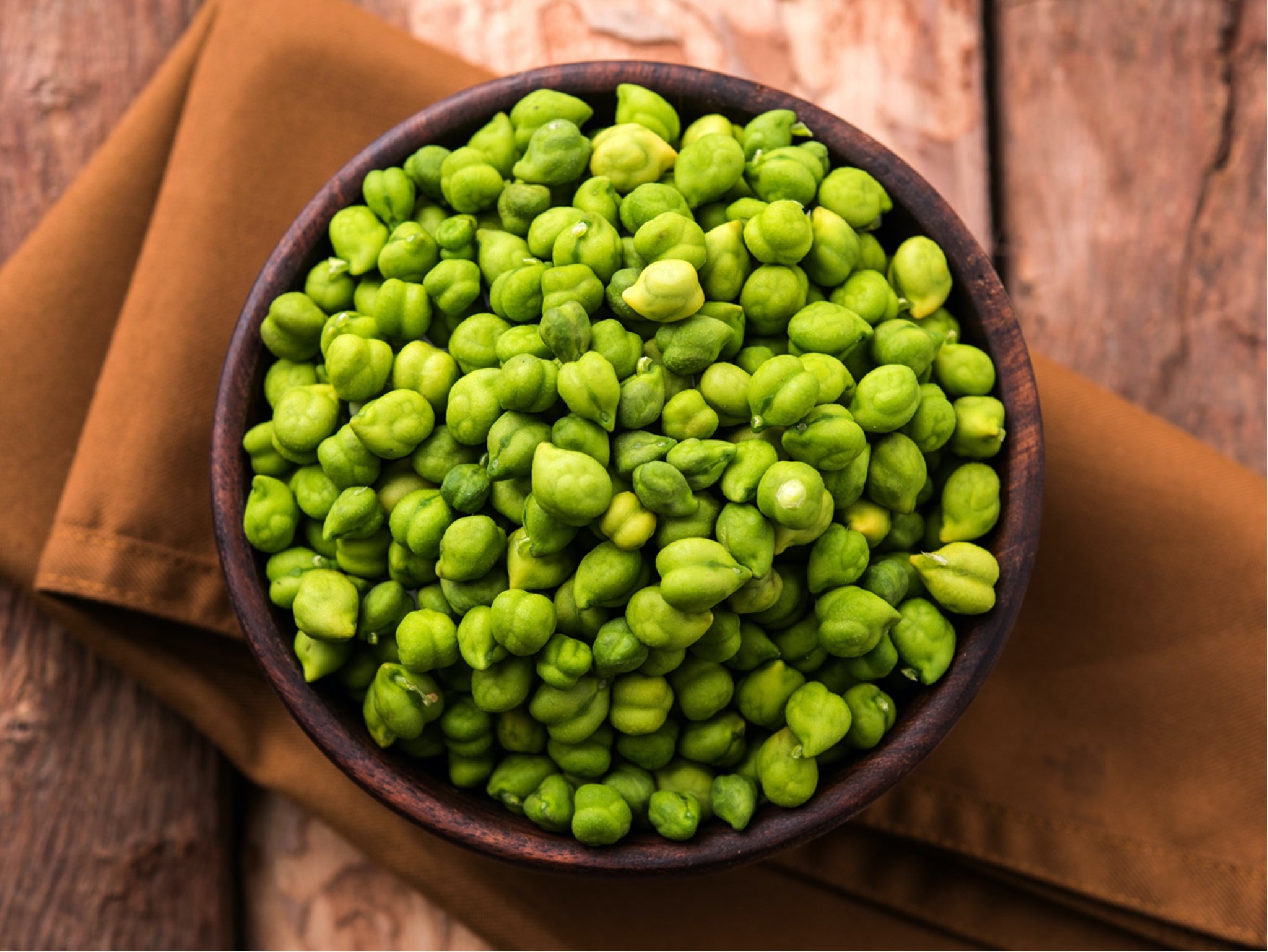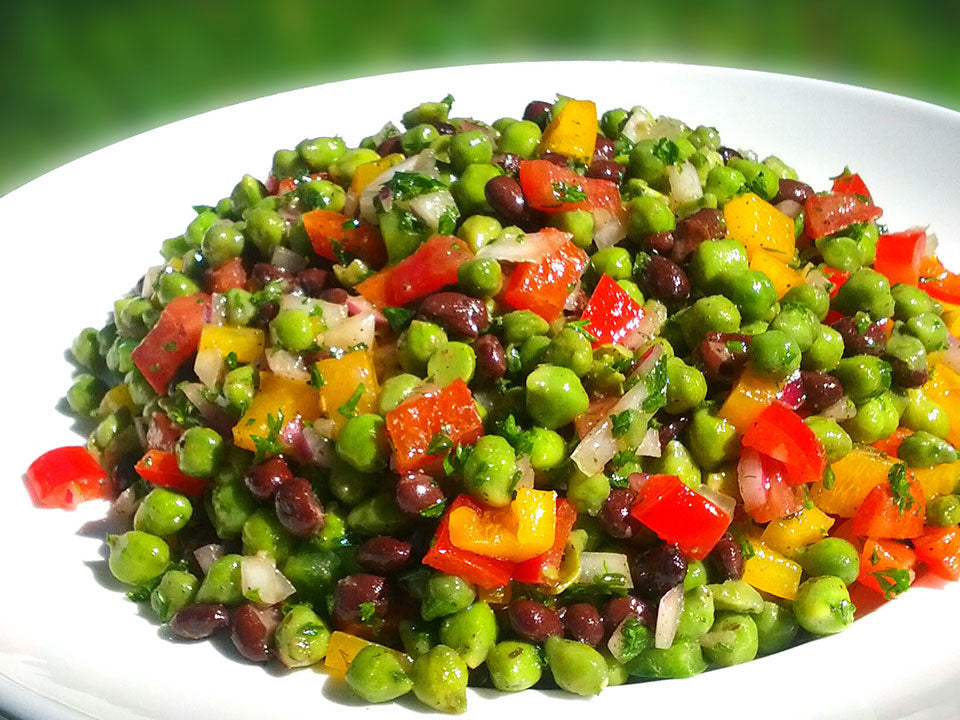Green Chick Peas
- Product Weight: 454 g
- Category: Fresh Fruits & Vegetables, Grocery & Gourmet Foods, Vegetables

The Nutrients in Green Chickpeas
Chickpeas, garbanzo beans, chi-chi beans — regardless of what you call them, these popular legumes grace the corners of salad bars throughout the United States. You’ve probably tried processed chickpeas, which are large and yellow, but raw, green chickpeas are generally more nutritious, as long as you soak them to remove undesirable protein-inhibiting enzymes. You can eat green chickpeas by themselves as a snack or saute them and add them to a pasta or rice dish. They can also add a fresh, light flavor to any veggie medley.
The Basics
A 1/2-cup serving of green chickpeas has 364 calories, which may sound high until you hear about all of the good things packed into it. This small amount provides 19.3 grams of protein, giving you more protein than a 3-ounce serving of baked halibut. It also has as much fiber as 4 medium apples, with 17.4 grams of dietary fiber. Although it contains 6 grams of fat, only about 1/2 gram of that is saturated fat. It contains no cholesterol and 10 grams of natural sugar.
B-Vitamins
Green chickpeas are rich in B-vitamins, which help your body use carbohydrates, protein and fat from food. Each 1/2 cup has more than 100 percent of your daily requirement for folate, a B vitamin that plays a role in your body’s production of red blood cells and genetic material. It also protects unborn babies from developing neural tube defects. This serving of green chickpeas provides nearly half of the thiamine and vitamin B-6 you need daily, as well as a sixth of your daily requirement for riboflavin and a tenth of your niacin requirement.
Minerals
Even more impressive, 1/2-cup of green chickpeas provides half of the phosphorus and about a third of the iron and magnesium you need daily, supporting your bone, blood cells, muscles and nerve function. It has nearly half the zinc you need, offering antioxidant benefits to your immune system, and a fifth of your daily requirement for potassium, which works with sodium to help you maintain a healthy balance of water in your body. You also get more than 10 percent of your recommended calcium intake, further benefiting your bones, teeth and nerve function.
Proteins
Like raw soybeans and other legumes, raw chickpeas contain protease inhibitors, enzymes that prevent your body from properly digesting protein. This could decrease the benefits you get from their high protein content. According to investigative health journalist Warren Peary and William Peavy, Ph.D., cooking chickpeas is not the only way to reduce their protease inhibitors. When they tested various beans, they found that soaking green chickpeas in water for 24 hours at room temperature removed 59 percent of the protease-inhibitor activity.
The Nutrients in Green Chickpeas
Chickpeas, garbanzo beans, chi-chi beans — regardless of what you call them, these popular legumes grace the corners of salad bars throughout the United States. You’ve probably tried processed chickpeas, which are large and yellow, but raw, green chickpeas are generally more nutritious, as long as you soak them to remove undesirable protein-inhibiting enzymes. You can eat green chickpeas by themselves as a snack or saute them and add them to a pasta or rice dish. They can also add a fresh, light flavor to any veggie medley.
The Basics
A 1/2-cup serving of green chickpeas has 364 calories, which may sound high until you hear about all of the good things packed into it. This small amount provides 19.3 grams of protein, giving you more protein than a 3-ounce serving of baked halibut. It also has as much fiber as 4 medium apples, with 17.4 grams of dietary fiber. Although it contains 6 grams of fat, only about 1/2 gram of that is saturated fat. It contains no cholesterol and 10 grams of natural sugar.
B-Vitamins
Green chickpeas are rich in B-vitamins, which help your body use carbohydrates, protein and fat from food. Each 1/2 cup has more than 100 percent of your daily requirement for folate, a B vitamin that plays a role in your body’s production of red blood cells and genetic material. It also protects unborn babies from developing neural tube defects. This serving of green chickpeas provides nearly half of the thiamine and vitamin B-6 you need daily, as well as a sixth of your daily requirement for riboflavin and a tenth of your niacin requirement.
Minerals
Even more impressive, 1/2-cup of green chickpeas provides half of the phosphorus and about a third of the iron and magnesium you need daily, supporting your bone, blood cells, muscles and nerve function. It has nearly half the zinc you need, offering antioxidant benefits to your immune system, and a fifth of your daily requirement for potassium, which works with sodium to help you maintain a healthy balance of water in your body. You also get more than 10 percent of your recommended calcium intake, further benefiting your bones, teeth and nerve function.
Proteins
Like raw soybeans and other legumes, raw chickpeas contain protease inhibitors, enzymes that prevent your body from properly digesting protein. This could decrease the benefits you get from their high protein content. According to investigative health journalist Warren Peary and William Peavy, Ph.D., cooking chickpeas is not the only way to reduce their protease inhibitors. When they tested various beans, they found that soaking green chickpeas in water for 24 hours at room temperature removed 59 percent of the protease-inhibitor activity.


































